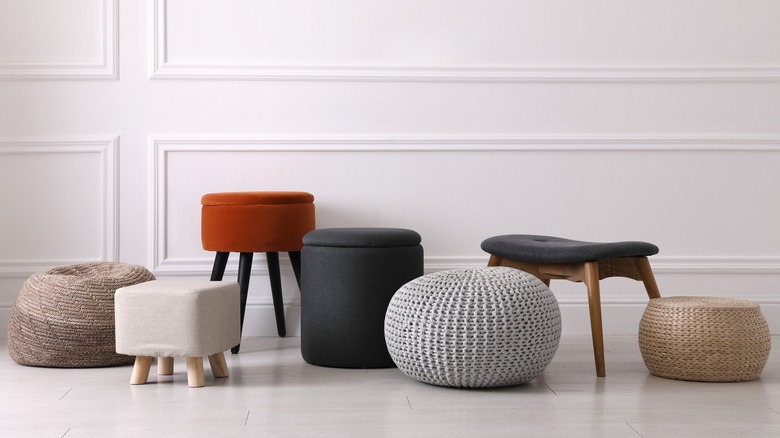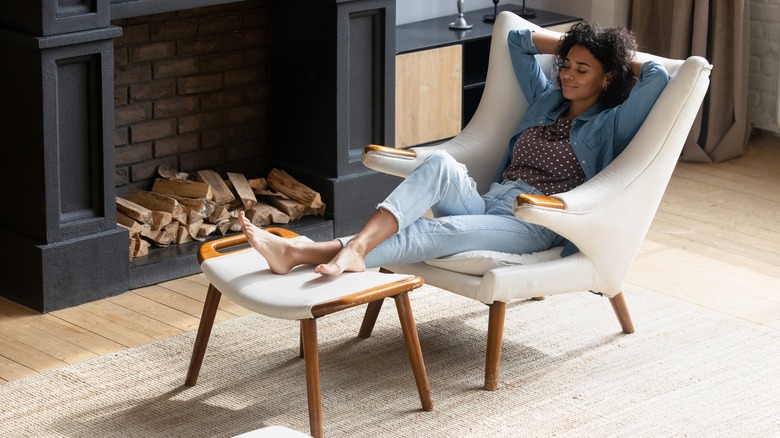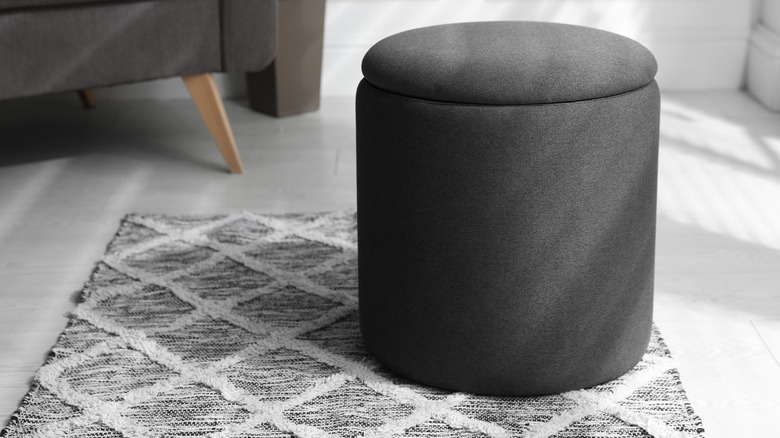Ottoman Vs. Footstool: Which Is Right For Your Space?
Ottomans and footstools are versatile pieces of furniture that are often lumped in the same category and used interchangeably — both as terms and in function. But what exactly are the differences between these two types of accent furniture, and which is the right one for your living space?
In short, ottomans are cushioned, low upholstered seats designed without arms or a back. These may also have a lid and be hollow inside, allowing them to function as extra storage space. Footstools, meanwhile, are essentially low stools that provide a place for you to rest your feet while sitting.
While they do share similarities in look and style, ottomans and footstools serve different purposes. So which one is right for your space? The best one for you depends on a number of factors; most importantly, your personal preferences. Below, we'll go over the key differences between ottomans and footstools to help you determine the most appropriate one for you.
How ottomans and footstools are different
As noted, ottomans and footstools are often confused with one another because they look similar and function almost the same. However, compared to ottomans, footstools are more limited in their use, which could certainly factor into whether or not a footstool is right for your space and what you plan to do with it.
Footstools can serve as footrests and extra seating, but that's basically the end of their list. Ottomans, on the other hand, can also serve as a footrest or seating, but many ottoman designs can also be used as extra storage space or function as a coffee table. Further, ottomans are typically larger than footstools.
Additionally, ottomans are available in several styles and cushioned to provide users comfort. As such, the upholstered cushion can provide individuals with the necessary support they may need while sitting down. In most cases, footstools are primarily used to elevate the legs and support the feet, so they're not designed for extended periods of sitting.
One benefit of footstools, however, is that they typically feature simple designs, making them easier to move from one place to another within a space.
Is an ottoman or footstool right for you?
So which piece of accent furniture wins the ottoman vs. footstool debate? Both ottomans and footstools provide users with several benefits, including a place to rest your feet after a long day. But whether an ottoman or a footstool is right for you and your space depends on your specific needs and personal preferences. For example, if you're looking to add a multifunctional piece of furniture with storage, a stylish ottoman may be better suited for your space. This item can be useful for hiding stray dog toys or other knickknacks in plain sight while keeping them within easy reach when needed.
However, if you don't need extra storage space or additional seating, a smaller footrest may be more practical. You may also have to take into account the size of your space. Remember that most ottomans are much larger than footstools, so one may take up a lot of room, which can make movement difficult if the space is limited. With this said, if you're thinking of adding a centerpiece to your space, like a coffee table, then an ottoman coffee table could be the design solution for you.


